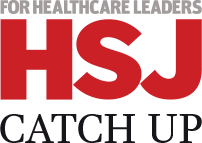The must-read stories and debate in health policy and leadership.
- Today’s high-profile appointment: Former NHS chief executive to chair hospital trust
- Today’s expert insight on recovering services: Why focusing on year-long waiters is futile
The good news - that covid is on the decline - inevitably meant some not so great news for NHS England in yesterday’s Budget, namely that its funding for 2021-22 will be cut by £9bn compared to the current year.
This year, NHSE has received an additional £18bn in covid cash on top of its planned budget of £130bn, giving it an expected total spend of £148bn.
But it seems unlikely this will be set in stone, given the uncertainty about how the covid will manifest itself throughout the year.
King’s Fund chief analyst Siva Anandaciva told HSJ the Treasury would need to show continued flexibility on dealing with the crisis.
“On the face of it, today’s budget suggests that planned NHS spending on covid-19 will be dramatically lower in 2021-22 than it was this year,” Mr Anandaciva said.
“But the experience of the previous year – from the Spring budget 2020 onwards – suggests that this will not be the final word on spending for next year, and the NHS will surely need additional funding to meet any future waves of the virus and make some headway into the rising waits for care that have built up.”
The rocky road ahead
Our story revealing that NHS London’s regional team has order its integrated care systems to draw up plans for “another possible [covid-19] surge later in 2021” also uncovered the capital’s desire to jump ahead on another key issue: elective recovery.
The guidance, dated February 2021 and seen by HSJ, said ICSs should set out how their long waiter backlog, those waiting 52 weeks or more, will be “eliminated through the effective use of residual elective capacity”.
However, waiting list experts including HSJ columnist Rob Findlay warned that “the idea that you can reduce long waiters sustainably by targeting them simply won’t work”.
“The year-long waiters represent the tip of a very big iceberg, which comprises capacity shortages, in terms of staffing, beds, and facilities, below the surface. You can’t simply chop the top off the iceberg — otherwise it will just bob back up again,” Mr Findlay said.
You can read more about this debate, and the other challenges facing system leaders as they draw up a national framework to oversee its waiting list management, due to be published later this month, in this week’s Recovery Watch.
Train crash
The relationship between the private sector and the NHS throughout the pandemic has, for want of a better word, been unprecedented but certainly not all plain sailing. Last spring the NHS block-booked all private sector capacity and it has remained unclear what the future agreement would look like and in many parts of the country has been pretty piecemeal.
In September, many NHS trainee doctors may have felt optimistic when it was announced in September, an arrangement for NHS medical trainees to complete some of their training in independent hospitals. This was the first time any such agreement had been reached.
However, the Royal College of Anaesthetists has suggested major provider Spire in particular has been “extremely uncooperative” in facilitating the training of young clinicians.
HSJ is also aware of problems in South Yorkshire at BMI’s Thornbury Hospital.
The Independent Health Providers Network has said its hospitals are working to reduce bureaucracy improve access to training in the independent sector, but for some trainees these important opportunities could already have been missed.



























No comments yet